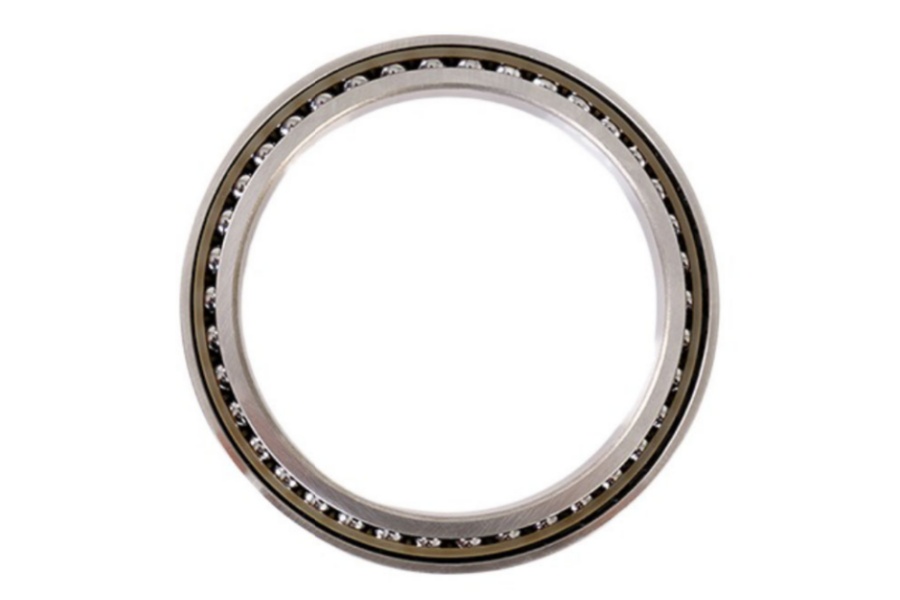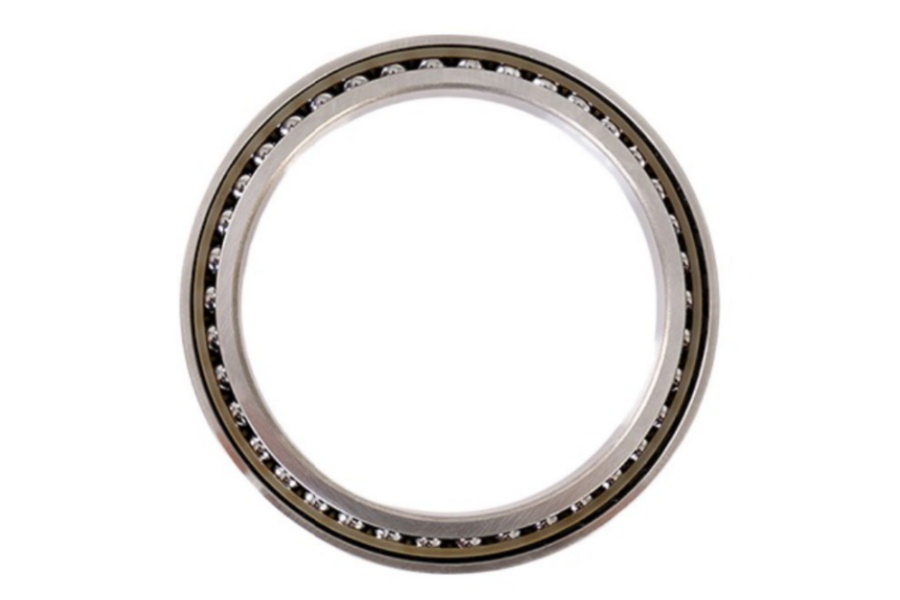
What Problems Affect the Service Life of Slewing Bearings
What is a Slewing Bearing
Slewing Bearings are large-scale rolling-element bearings designed to accommodate combined loads including axial, radial, and moment loads, facilitating smooth and controlled rotation between different parts of heavy machinery. Unlike standard bearings, they are integral components that often feature integrated gear teeth (either internally or externally) and mounting holes, allowing for direct attachment to structural components. Their primary function is to enable rotational movement under high load conditions, making them indispensable in applications where heavy loads must be rotated with precision. Essentially, they serve as the rotational heart of a machine, and their failure can bring entire operations to a standstill.

Which Problems Affect the Service Life of Slewing Bearings
The service life of a slewing bearing is not just a function of its inherent quality but is profoundly influenced by a multitude of external factors. Ignoring these aspects can drastically shorten its operational lifespan, leading to premature failure, unplanned downtime, and significant financial losses. The key problems that can negatively impact longevity can be categorized into several critical areas.
Problems with the Equipment Itself
The machinery onto which the slewing bearing is mounted plays a fundamental role in its performance and durability. Two primary equipment-related issues are particularly detrimental.
First is insufficient rigidity of the equipment's mounting foundation. A slewing bearing is designed to handle immense loads, but it relies on a robust and rigid support structure to distribute these loads evenly. If the mounting foundation or the structure surrounding the bearing lacks the necessary rigidity, it will flex or elastically deform under high operational loads. This deformation prevents the slewing bearing from sitting flush and secure, causing it to warp slightly. Consequently, the bearing raceways become misaligned, leading to uneven load distribution across the rolling elements (balls or rollers). Instead of the load being shared equally by all elements, only a few bear the brunt of the force. This creates concentrated stress points, accelerating fatigue, causing premature wear, spalling, and ultimately, catastrophic failure. The bearing is essentially fighting against a flexible structure, which induces internal stresses it was not designed to handle.
The second major issue is poor flatness of the mounting surface. The mating surface on the host equipment must be machined to a high degree of flatness to ensure perfect contact with the slewing bearing's mounting surface. If this surface is uneven, gaps will exist between the bearing and the foundation. The correct procedure is to use precisely sized shims to fill these gaps and create a perfectly level mounting plane. However, this critical step is often overlooked or performed incorrectly during installation. When the mounting bolts are tightened on an uneven surface, they pull the slewing bearing into a distorted, warped shape. This distortion is transferred directly to the hardened raceways, altering their geometry. The result is inconsistent internal clearance, improper rolling element contact, increased friction, binding, and uneven rotation. The bearing will no longer operate smoothly, and the abnormal stresses will lead to rapid degradation of the raceways and rolling elements, severely truncating its service life.
Overload Operation
Every slewing bearing is engineered with specific load ratings—clearly defined limits for axial load, radial load, and tilt moment capacity. These ratings are calculated to ensure operation within the safe fatigue limits of the material. Operating the bearing beyond these specified limits, known as overload, is one of the most destructive practices.
During overload, the forces exerted on the individual rolling elements and raceways exceed their designed maximum capacity. The extremely high contact pressures can cause immediate and permanent damage. This manifests as brinelling—the creation of indentations or pits in the raceway—which disrupts the smooth rolling motion. In severe cases, rolling elements can fracture or shatter. Furthermore, the excessive stress drastically accelerates material fatigue. Micro-cracks develop and propagate much more quickly than under normal loads, leading to widespread spalling (where chunks of material break away from the raceway surface) in a very short period. Even a single, brief episode of severe overload can inflict catastrophic damage from which the bearing cannot recover, rendering it unusable and necessitating immediate replacement. Beyond just damaging the component, overload operation poses a severe safety risk, potentially leading to structural failures or accidents on site.
Contamination
Contamination is a silent killer of slewing bearings. It refers to the ingress of foreign solid particles (like dust, sand, or metal shavings) or liquids (water, corrosive fluids) into the bearing's internal spaces—the protected raceways and the gear teeth.
Solid abrasive particles act like a grinding paste. Once inside the bearing, they become trapped between the highly finished surfaces of the raceways and the rolling elements. With every rotation, these hard particles abrade, scratch, and score the surfaces, causing rapid wear and degrading the precise geometry essential for smooth operation. Similarly, if contaminants enter the meshing area of the internal or external gears, they wear down the tooth profiles, leading to backlash, noisy operation, and eventual gear failure.
Water and moisture contamination leads to corrosion and rust. The hardened steel of the bearing is vulnerable to oxidation when exposed to water. Rust pits on the raceways or rolling elements act as stress concentrators, initiating cracks that lead to fatigue failure. Furthermore, water and other contaminants degrade the integrity of the lubricating grease. They can cause the grease to emulsify, lose its viscosity, and wash away, stripping the bearing of its essential protective layer and leaving metal-on-metal contact. This combination of abrasive wear, corrosion, and lubricant breakdown ensures that a contaminated bearing will fail long before its intended lifespan.
Lubrication
Proper lubrication is the single most important factor for maximizing the service life of any bearing, and slewing bearings are no exception. Lubrication serves three vital purposes: it reduces friction and wear between metal surfaces, helps dissipate heat generated during operation, and protects against corrosion.
Slewing bearings operate under slow oscillatory or rotational movements, which makes it challenging to maintain a full lubricant film. They require high-viscosity, extreme-pressure greases specifically formulated for large rolling bearings. Operating a slewing bearing with insufficient lubrication, the wrong type of grease, or degraded grease has dire consequences. Without an adequate lubricant film, friction increases dramatically, leading to excessive heat generation, accelerated wear, and scouring of the raceways. The increased operating temperature can anneal the hardened steel, reducing its hardness and load-carrying capacity. For the integrated gears, lack of lubrication causes accelerated tooth wear and potential scuffing. Chronic under-lubrication is a primary cause of premature slewing bearing failure. A disciplined, regular maintenance schedule based on the manufacturer's recommendations for regreasing intervals and the correct lubricant type is non-negotiable for achieving the design life of the bearing.
Characteristics of Slewing Bearings
Slewing bearings possess a unique set of characteristics that distinguish them from standard bearings and make them suitable for their demanding roles. Their most defining trait is the ability to handle complex combination loads—simultaneously supporting axial, radial, and moment loads—which would typically require a system of multiple standard bearings. Their integrated design often includes gear teeth, which are induction hardened for wear resistance, allowing them to transmit torque directly for rotation. They are engineered for durability and longevity, typically manufactured from high-quality, through-hardened or case-hardened alloy steels to provide a tough core and a hard, wear-resistant surface on the raceways. Furthermore, they are designed with scalability in mind, available in diameters ranging from a few inches to over several meters to suit vastly different applications. Sealing is another critical characteristic; robust seals are integrated to protect the internal raceways and rolling elements from contamination. Finally, they feature numerous mounting holes (threaded or plain) on both the inner and outer rings, enabling direct and secure bolting to the machine structure, simplifying design and assembly.
Applications of Slewing Bearings
The ability to facilitate controlled rotation under immense loads makes slewing bearings ubiquitous across heavy industry. Some of the most common applications include:
Construction Machinery: They are the cornerstone of excavators, mobile cranes, tunnel boring machines, and concrete pumps, enabling 360-degree rotation of the upper structure (house) relative to the undercarriage.
Wind Energy: In wind turbines, a massive slewing bearing is used in the yaw system to rotate the nacelle to face the wind and in the pitch system to adjust the angle of the blades for optimal power generation and protection.
Material Handling: Stacker reclaimers, rotary conveyors, and robotic arms used in ports, mines, and factories rely on slewing bearings for precise and reliable movement.
Industrial Machinery: They are found in turntables, welding positioners, indexing tables, and any equipment requiring a robust rotational axis.
Defense and Aerospace: Slewing bearings are used in radar platforms, missile launchers, and telescope mounts for smooth and precise rotational positioning.
Medical Equipment: Advanced medical imaging devices like CT scanners and MRI machines use precision slewing bearings for the smooth and quiet rotation of their scanning gantries.
What Factors Influence the Price of Slewing Bearings
The cost of a slewing bearing is not arbitrary; it is determined by a combination of engineering, material, and manufacturing factors. Key influencers include:
Size and Dimensions: The physical diameter, width, and height of the bearing are primary cost drivers. Larger bearings require more raw material and more complex machining.
Load Capacity: Bearings engineered to withstand higher combination loads require more robust design, larger rolling elements, and often higher-grade materials, increasing cost.
Material Grade: The type and quality of steel used (e.g., 42CrMo4, 50Mn) significantly impact price. Higher-grade, cleaner steels with better mechanical properties are more expensive.
Manufacturing Complexity: Features like integrated gear teeth (and the precision grinding required), custom sealing solutions, special hardening processes, and non-standard mounting hole patterns all add to the manufacturing time and cost.
Precision and Tolerance: Bearings manufactured to tighter tolerances for high-precision applications (e.g., medical or aerospace) require more advanced and time-consuming machining and quality control, commanding a higher price.
Customization: A standard off-the-shelf bearing will be less expensive than a fully custom-designed bearing made to meet unique application requirements.
Brand and Quality Assurance: Reputable manufacturers who invest in rigorous quality control, testing, and certification (e.g., ISO 9001) often have higher prices, which reflect the reliability and longevity of their product.
Supplier of Slewing Bearings
For engineers and procurement specialists seeking a reliable source for high-performance slewing bearings, LYRADRIVE stands as a trusted manufacturer and supplier. The company specializes in the design and production of a comprehensive range of precision slewing bearings and slewing drives for demanding global industries. LYRADRIVE's products are engineered with a focus on robust performance, extended service life, and reliability, achieved through advanced manufacturing techniques, stringent quality control processes, and the use of high-grade materials. They offer both standard and fully customized solutions to meet specific application requirements, providing essential technical support from design integration through to maintenance. By choosing a supplier like LYRADRIVE, customers invest not just in a component, but in a partnership aimed at ensuring optimal machine uptime and productivity, backed by proven expertise in rotational technology.



